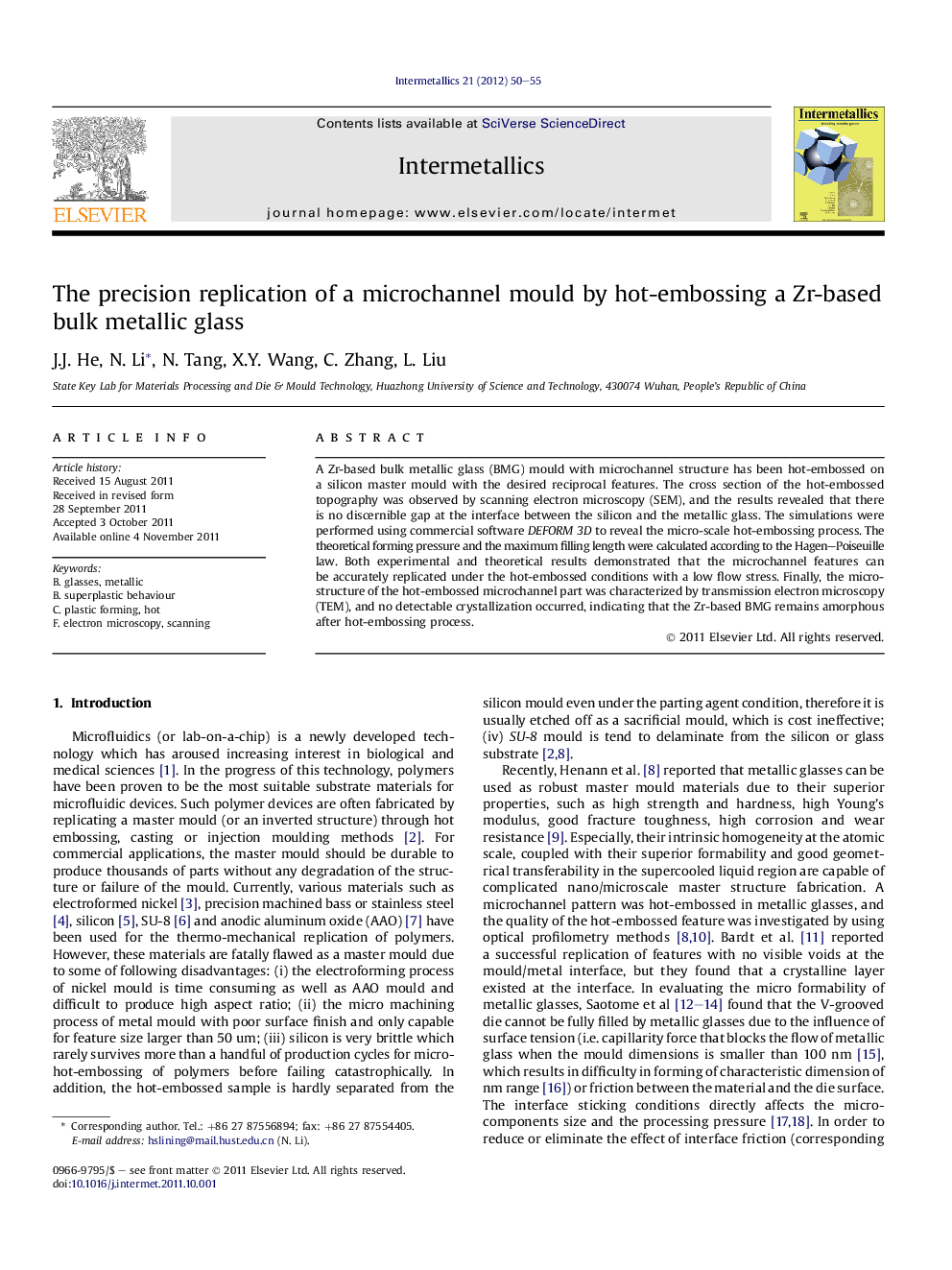| Article ID | Journal | Published Year | Pages | File Type |
|---|---|---|---|---|
| 1600622 | Intermetallics | 2012 | 6 Pages |
A Zr-based bulk metallic glass (BMG) mould with microchannel structure has been hot-embossed on a silicon master mould with the desired reciprocal features. The cross section of the hot-embossed topography was observed by scanning electron microscopy (SEM), and the results revealed that there is no discernible gap at the interface between the silicon and the metallic glass. The simulations were performed using commercial software DEFORM 3D to reveal the micro-scale hot-embossing process. The theoretical forming pressure and the maximum filling length were calculated according to the Hagen–Poiseuille law. Both experimental and theoretical results demonstrated that the microchannel features can be accurately replicated under the hot-embossed conditions with a low flow stress. Finally, the microstructure of the hot-embossed microchannel part was characterized by transmission electron microscopy (TEM), and no detectable crystallization occurred, indicating that the Zr-based BMG remains amorphous after hot-embossing process.
Graphical abstractThe cross section of the hot-embossed topography was observed by scanning electron microscopy (SEM), and the results revealed that there is no discernible gap at the interface between the silicon and the metallic glass, demonstrating that the microchannel features can be accurately replicated under the hot-embossed conditions with low forming stress.Figure optionsDownload full-size imageDownload as PowerPoint slideHighlights► We hot emboss a bulk metallic glass mould with micochannel structure. ► We examine the replication accuracy from theoretical and experimental aspects. ► We characterize the microstructure of the hot-embossed microchannel part.
